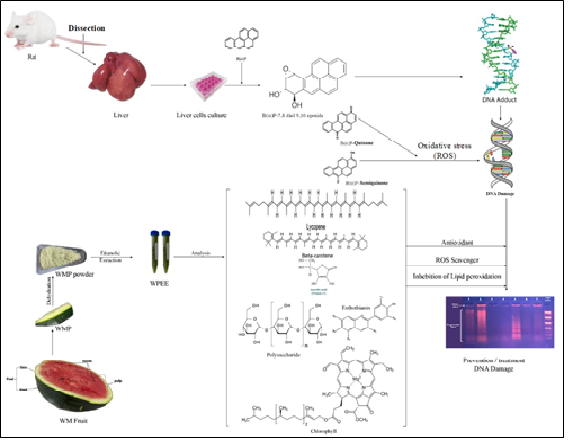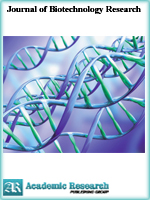Journal of Biotechnology Research
Online ISSN: 2413-3256
Print ISSN: 2413-8878
Print ISSN: 2413-8878
Quarterly Published (4 Issues Per Year)

Archives
Volume 8 Number 3 July 2022
Potential of Watermelon (Citrullis Lanatus) Peel Extract in Attenuating Benzo[a]Pyrene Exposure-Induced Molecular Damage in Liver Cells in vitro
Authors: Yousif A. Elhassaneen ; Sobhy E. Hassab El-Nabi ; Asmaa I. Bayomi ; Ahmed R. ElKabary
Pages: 32-45
DOI: doi.org/10.32861/jbr.83.32.45
Abstract
Benzo[a]pyrene (B[a]P), a ubiquitous and prototypical environmental and dietary toxicant, promotes oxidative stress and DNA damage. Plant parts such as watermelon (Citrullis Lanatus) peel have a potent antioxidative activity that protects cells from oxidative stress and cellular damage. In the present study, we evaluate the bioactive compounds content and antioxidant activity of watermelon peel ethanolic extract (WPEE) and its potential role in attenuating B[a]P exposure-induced molecular damage in liver cells in vitro. WPEE showed high amounts of bioactive compounds, which include polyphenols, polysaccharides, lycopene carotenoids, flavonoids, tannins, anthocyanins, chlorophyll and some vitamins such as A, C and E besides high antioxidant activity. Liver cells cultures subjected to 10 µM of B[a]P leads to many adverse effects including cytotoxic effect (inhibition the cell growth) and damage to macromolecules, such as DNA and RNA measured by Electrophoretic pattern. This induction was markedly reduced after WPEE Co-treatment by the concentrations 25, 50, 75 and 100 µg.ml-1 which exhibited a dose-dependent efficacy. In conclusion, B[a]P-induced cytotoxicity occurs through DNA damage, cell cycle arrest and ROS production. WPEE could reverse some of these B[a]P-mediated alterations and therefore be effective natural compounds against the adverse effects of B[a]P in liver cells.




